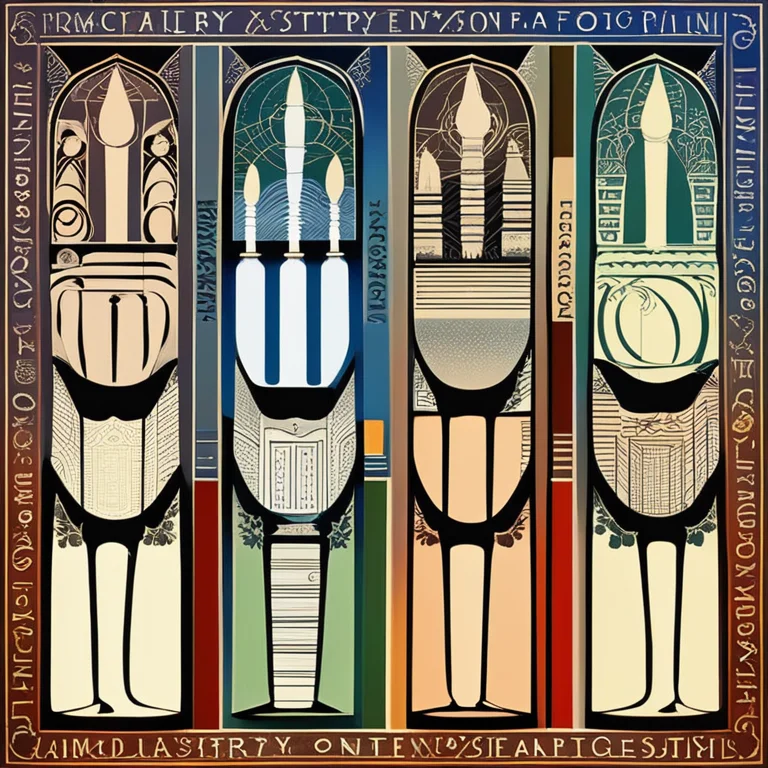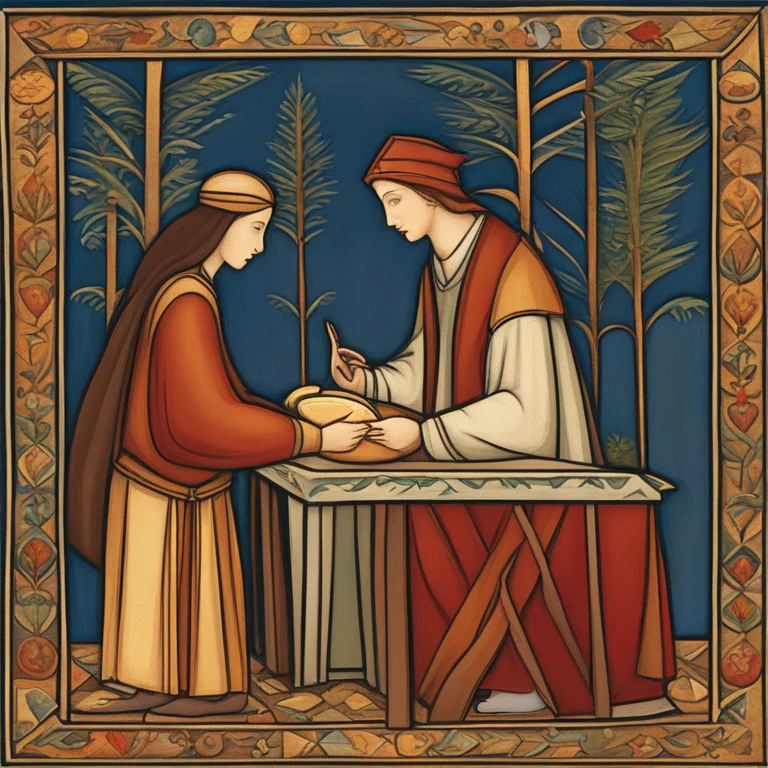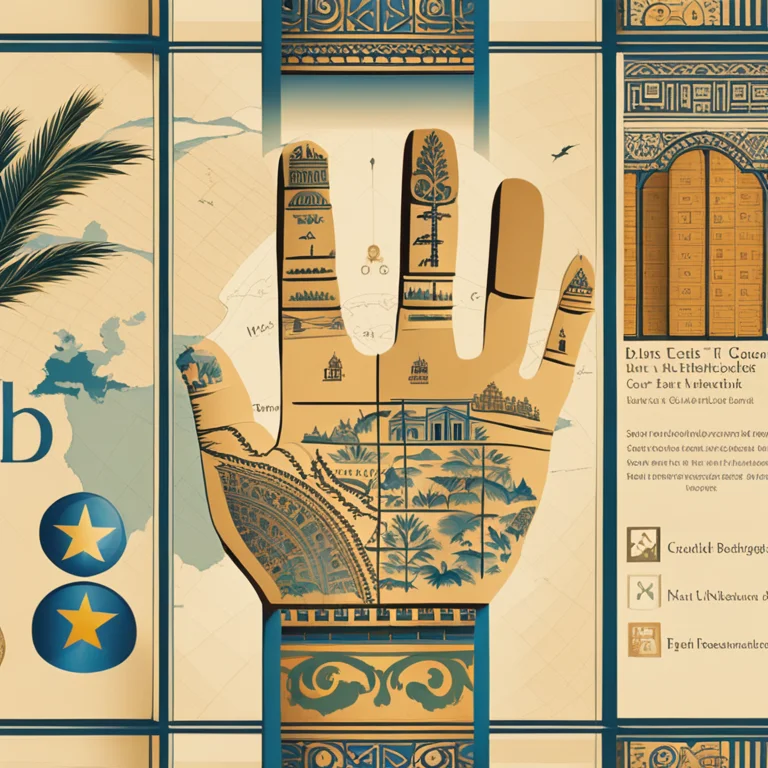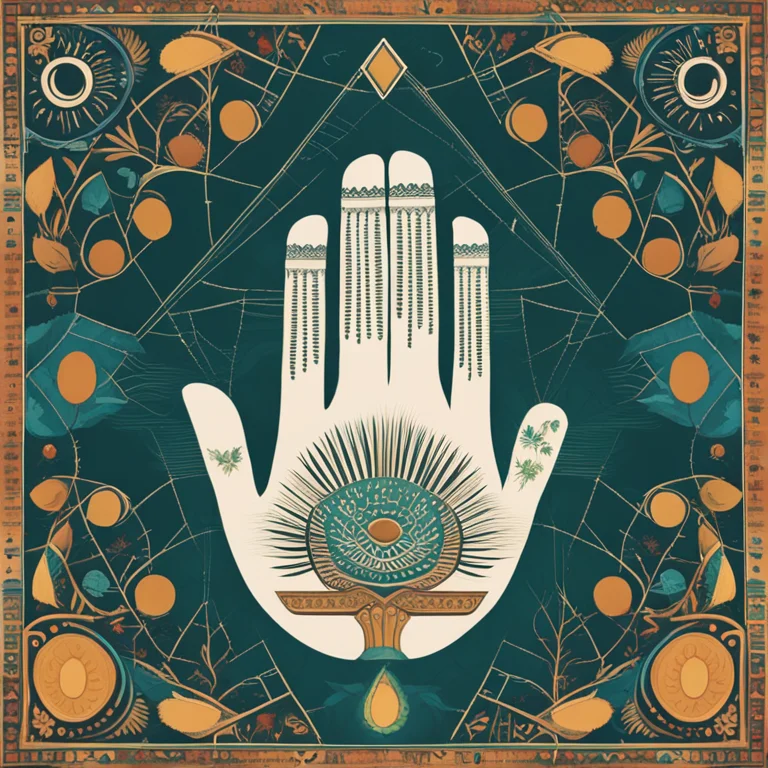
The Origins of Palmistry Explored
Trace the roots of palmistry to uncover when this ancient practice began. This article delves into the historical journey of palm reading.
article by Nora Pennington
The Initial Traces of Palmistry
Palmistry, or chiromancy, is the mystical art of reading one's palms to discern their character and glimpse their future. The origins of palmistry are somewhat obscure, with various cultures embracing the practice throughout history. It is widely believed that palmistry started in ancient India and was initially connected to Hindu astrology with the term 'Hasta Samudrika Shastra.' The scripts that suggest earliest palmistry practices date back thousands of years, and it was later adopted by neighboring civilizations such as the Chinese, Tibetans, Persians, Egyptians, and Greeks.

The Greek Influence and Expansion
The practice was given significant attention by the Greeks, thanks to Anaxagoras, who brought the knowledge from his travels in Asia. Aristotle (384-322 BCE) is often cited as a proponent who helped propagate the study of palmistry through his work 'De Historia Animalium' (History of Animals). Aristotle's student, Alexander the Great, took an interest in examining the lines on soldiers' palms, asserting that they revealed character strength and potential for valor. As the Greeks extended their empire, they spread the art of palm reading throughout Europe.

The Middle Ages and Beyond
During the Middle Ages, the Christian church opposed palmistry, labeling it as pagan superstition and often linking it to witchcraft. This led to a decline in public palmistry practice in Europe. Nonetheless, the art survived and resurfaced during the Renaissance, as scholars and artists began to appreciate ancient knowledge. The 17th century saw a resurgence in interest, with notable figures like Captain Caspar Melchior contributing to its growth through his influential work on chiromancy.

Modern Palmistry's Evolution
The lore of palmistry continued to evolve and reach new heights by the 19th century. Scholars like Adrien Adolphe Desbarrolles and William John Warner, also known as Cheiro, delivered a scientific approach to palmistry. Their work demystified the practice and popularized it by providing methodical ways to interpret hand features. By the end of the 19th and throughout the 20th century, palmistry became a blend of art and pseudoscience, captivating those interested in the esoteric and the occult. In the digital age, the practice has found a new audience, with platforms and websites dedicated to the ancient discipline.

Palmistry in Contemporary Times
Today, palmistry is part of a broader spectrum of spiritual and personality assessment tools used by people seeking self-understanding and guidance. While critics often dismiss palmistry as a pseudo-science, its proponents find value in the insights it offers. The art continues to evolve with psychological interpretations and narrative elements. Digital technology has allowed for online palm readings and even applications that analyze palms through smartphone cameras, making the ancient practice more accessible than ever.
Published: 1/11/2024
Modified: 1/12/2024
More predictions
Come back here soon to learn more about yourself and your future


The Basics of Palm Reading: A Beginner's Guide
Discover the basics of palm reading in this comprehensive guide aimed at beginners interested in the ancient practice of palmistry.


Palm Lines: A Guide to Your Hands' Secrets
Learn the art of reading palm lines with our straightforward guide. Discover what your hands reveal about your personality, destiny, and life!